Cantlop Bridge
Cantlop Bridge is a historic road bridge spanning the Cound Brook in the Shropshire countryside near Shrewsbury. It was most likely constructed to the satisfaction of Thomas Telford who was county surveyor at the time; therefore, Cantlop Bridge is considered the only surviving cast iron bridge by Telford in the county still in its original location. It is worth a visit for dedicated fans of Thomas Telford.
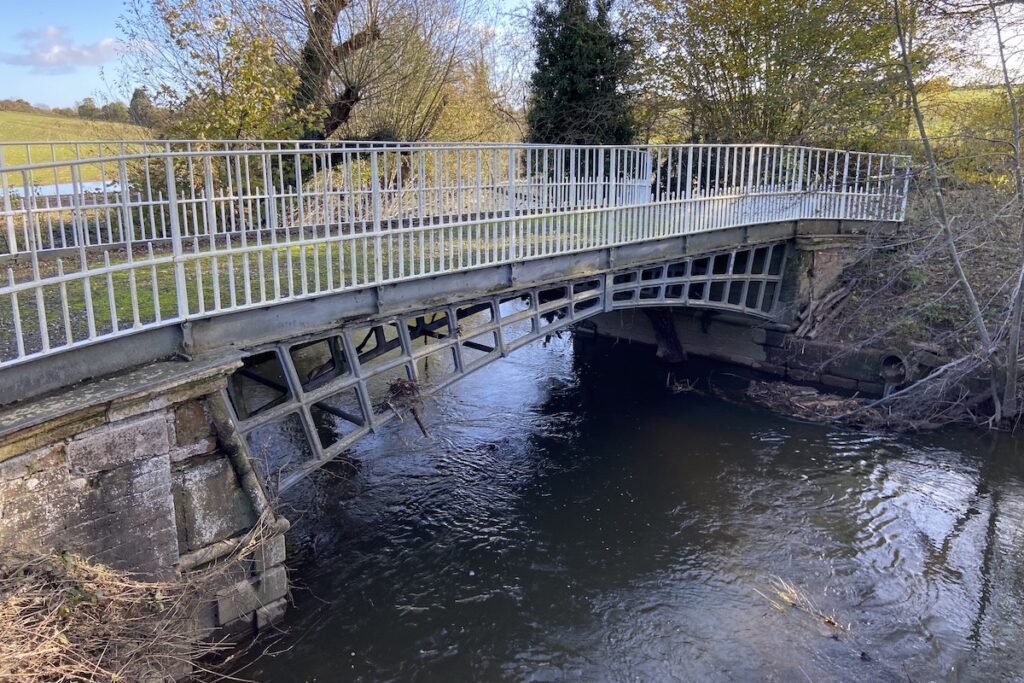
Key info
| Location | Longacre Dr, Cantlop, Shrewsbury SY5 7DD |
| County | Shropshire |
| Completed | 1813 |
| Engineer | Thomas Telford |
| Ironmaster | William Hazeldine (estimated) |
| Maintained by | English Heritage |
| Heritage category | Listed Building Grade II* |
Visiting guide
Open 24 / 7
Free entry
Free car parking (lay-by)
What can I expect when visiting Cantlop Bridge?
Park in the layby north of Cantlop Bridge and head south onto the modern road bridge for a view of its historic predecessor.

Head over to Cantlop Bridge for a closer look at its iron railings with dog bars and balusters.
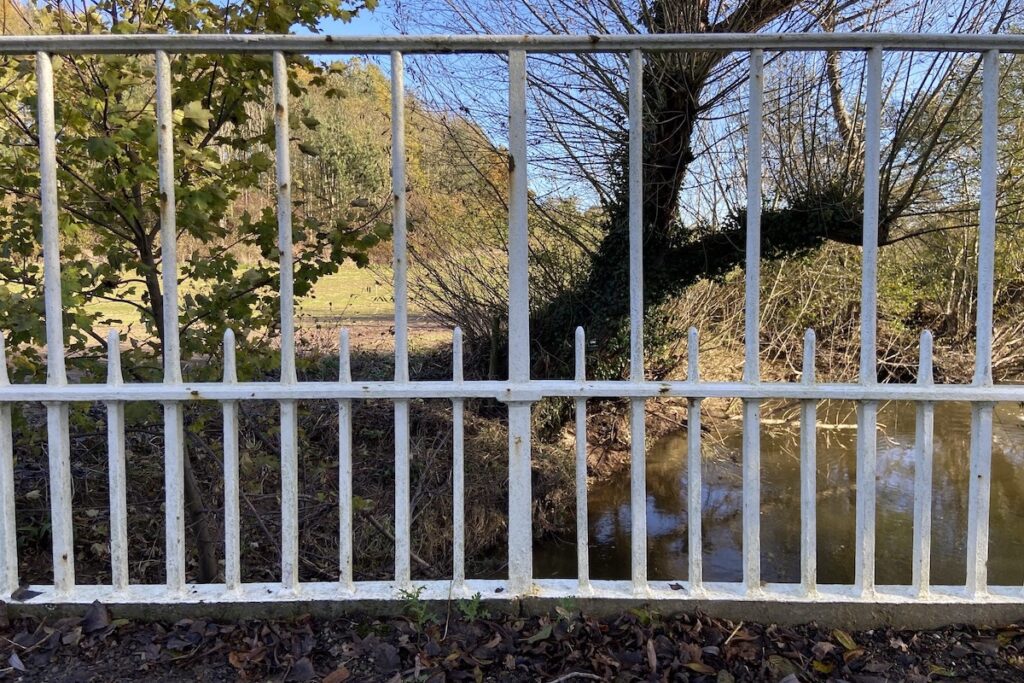
Proceed to the south bank of the Cound Brook to inspect the coursed red and grey sandstone curved abutment of which the four cast iron ribs spring from with a fan shape appearance.
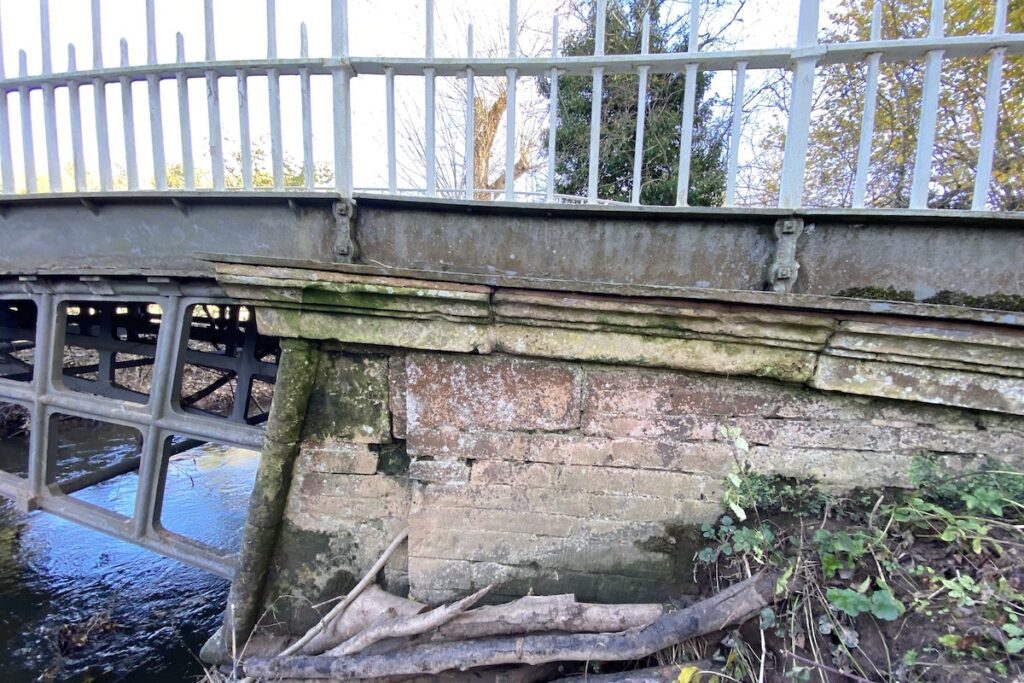
A closer view of the ribs reveals their intricate lattice design and bracing, which unfortunately acts as a perfect net for driftwood and other debris floating down the brook.
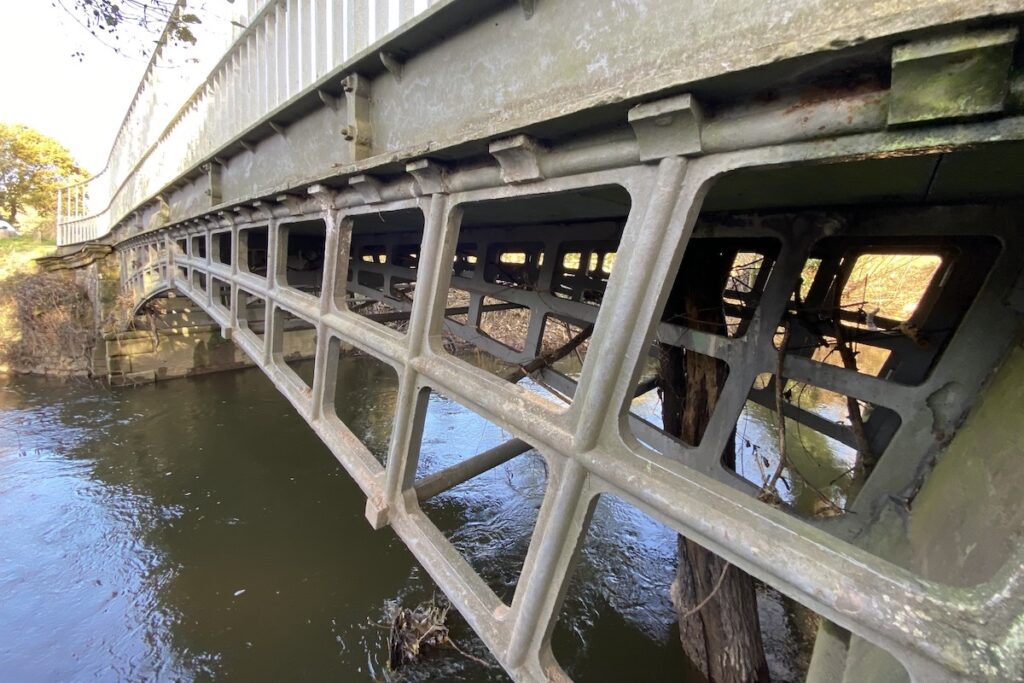
How long does it take to visit Cantlop Bridge?
It will take you roughly 10 mins to view the Cantlop Bridge, so it’s best to see it on the way to another site or attraction. You may wish to explore the public footpaths in the surrounding countryside.
How do I get to Cantlop Bridge?
If arriving by car, park in the layby located conveniently just north of the bridge.
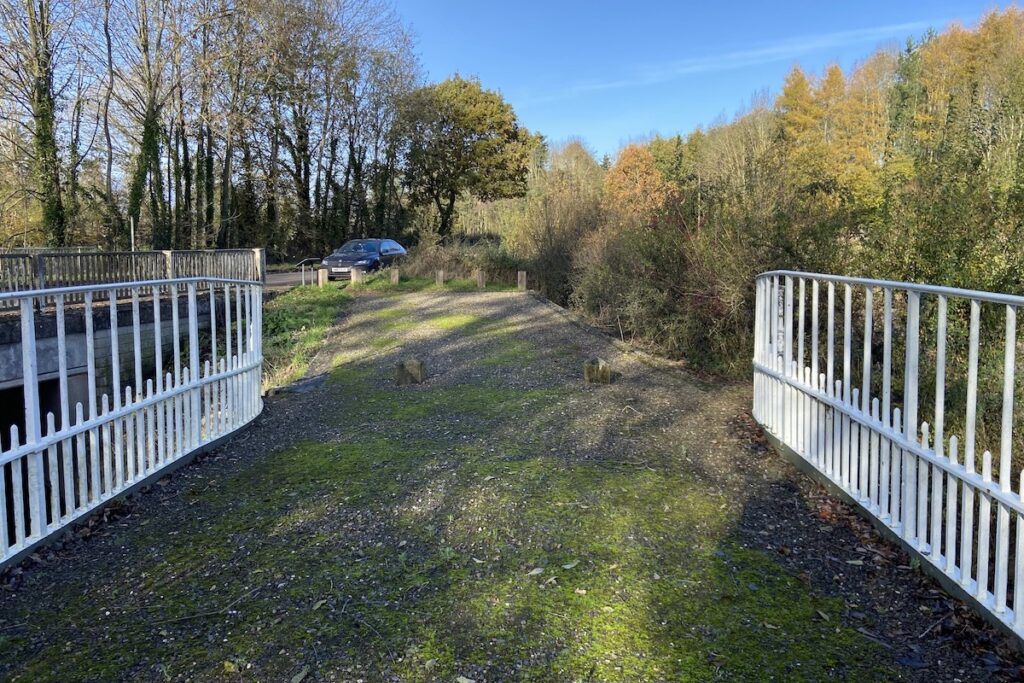
There are bus stops in the village of Cantlop, which is about 750 meters south of Cantlop Bridge. One could walk this distance, however the country road does not have any footways, so expect to walk close to traffic.
History of Cantlop Bridge
1812 – The Shropshire county authorities considered taking over the bridge that spanned the Cound Brook before the Cantlop Bridge was constructed. They found it required strengthening and widening; therefore, the authorities commissioned a new bridge.
1813 – Construction of the Cantlop Bridge, (the original structure you see today) is completed and was paid for by public subscription. Thomas Telford was still the country surveyor for Shropshire at the time.
1831 – The office of Thomas Telford confirms the Cantlop Bridge was been erected under the direction of Telford and to his satisfaction when responding to an enquiry made by the Deputy Clerk of the Peace. This is evidence is used by historians to connect the bridge and Thomas Telford [1]
1972 – The bridge is first designated as a Listed Building [2].
1974 – Cracks in one of the arch ribs results in a weight restriction enforced by Shropshire County Council. A new concrete bridge was constructed to the west resulting in the closure of Cantlop Bridge to traffic marking the start of its preservation as the only surviving cast iron bridge in Shropshire constructed under the direction of Thomas Telford [1].
Architecture
The roadway’s surface consists of cast-iron deck plates, which have been tarmacked and subsequently covered with gravel. This deck is supported by five cast iron transverse members, which in turn are held up by four parallel arched cast-iron ribs. These ribs are securely braced laterally to each other, forming a single segmental span spanning 9.5 meters.
The ribs originate from the stone abutments via a pair of transverse cast-iron plates, snugly fitted into rebates. The inclined abutments exhibit moulded string courses and chamfered ashlar quoins, elegantly adorned with cornices. They gracefully curve outward into the riverbank on both sides, imparting a fan-shaped design to the bridge’s terminations. On the northwest and southwest sides, one can observe later stone revetment walls. The intricate cast iron railings, painted to perfection, feature a dog rail, dog bars, and tastefully shaped balusters at their ends [2].
Sources
- Blackwall, A. (1985) Historic Bridges of Shropshire. Shrewsbury: Shropshire Libraries.
- Historic England (2020) Cantlop Bridge. Available at: https://historicengland.org.uk/listing/the-list/list-entry/1366715 (Accessed: 5 February 2024).

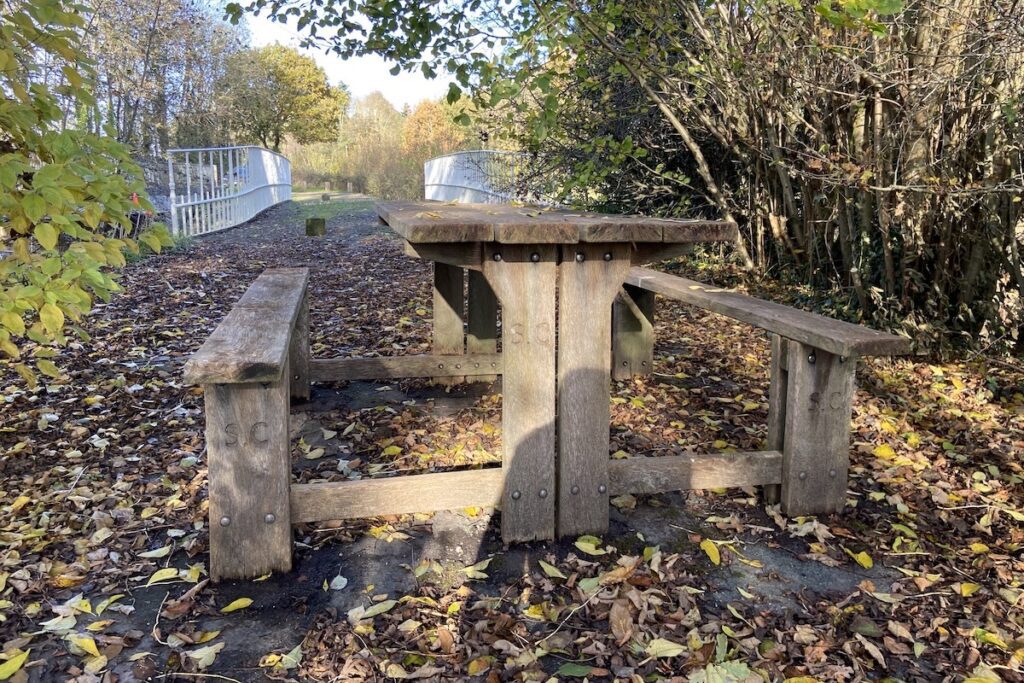
 Papplewick Pumping Station
Papplewick Pumping Station